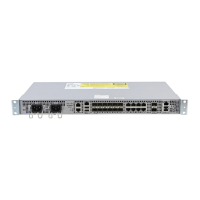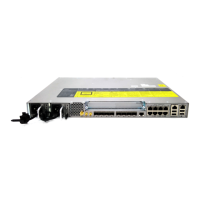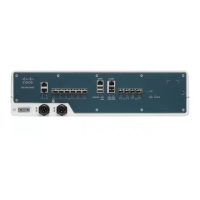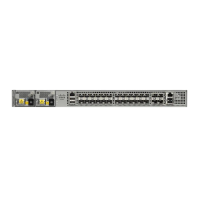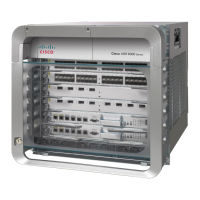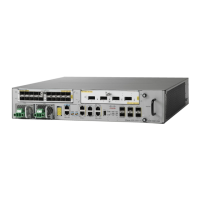Configuring a Multicast Static MAC Address
SUMMARY STEPS
1.
configure terminal
2.
interface interface-id
3.
service instance number ethernet [name]
4.
encapsulation {default | dot1q | priority-tagged | untagged}
5.
bridge-domain bridge-id [split-horizon group group-id]
6.
mac static address address
7.
end
DETAILED STEPS
PurposeCommand or Action
Enter global configuration mode.configure terminal
Example:
Router# configure terminal
Step 1
Specify the port to attach to the policy map, and enter interface
configuration mode. Valid interfaces are physical ports.
interface interface-id
Example:
Router(config)# interface gigabitethernet
0/3/6
Step 2
Configure an EFP (service instance) and enter service instance
configuration) mode.
service instance number ethernet [name]
Example:
Rotuer(config)# service instance 1
ethernet
Step 3
•
The number is the EFP identifier, an integer from 1 to 4000.
•
(Optional) ethernet name is the name of a previously configured
EVC. You do not need to use an EVC name in a service instance.
Configure encapsulation type for the service instance.encapsulation {default | dot1q |
priority-tagged | untagged}
Step 4
• default—Configure to match all unmatched packets.
Example:
Router(config-if-srv)# encapsulation
dot1q 1
• dot1q—Configure 802.1Q encapsulation. See Table 2:
Supported Encapsulation Types for details about options for
this keyword.
• priority-tagged—Specify priority-tagged frames, VLAN-ID 0
and CoS value of 0 to 7.
• untagged—Map to untagged VLANs. Only one EFP per port
can have untagged encapsulation.
Carrier Ethernet Configuration Guide (Cisco ASR 920 Series)
45
Ethernet Virtual Connections Configuration
Configuring a Multicast Static MAC Address

